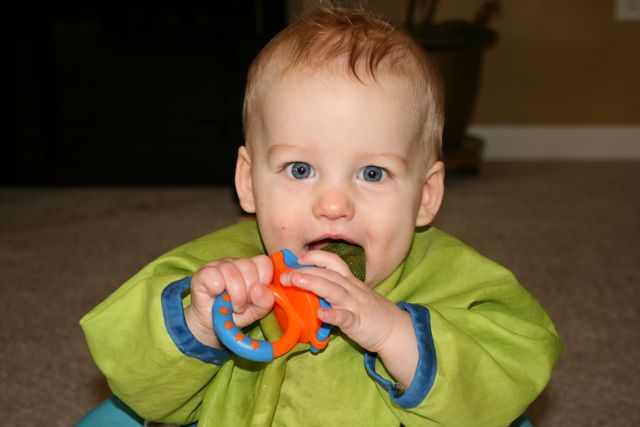How about offering your children fun and creative play gift ideas this Christmas? By creative play I am referring to supplying items that will help spur on and encourage their imagination, giving them freedom to explore and develop their minds. Here is a list of items that you can make at home inexpensively that will entertain your children for hours. We all love those frugal gift ideas, and the special touch of handmade items is an extra bonus.
Playsilks
 Playsilks are a simple creative play item made out of fabric and dyed various colors. These playsilks can be used to play peek-a-boo, doll blankets, forts, dressup clothes, head scarves, and numerous other ideas. There is no end to the ideas that little ones can come up with for their use. Playsilks can be a bit spendy to purchase, but you can make your own with white silk scarves sold through Dharma Trading Company. Include your little ones in a fun project of dying them with Kool-Aid. Yes, it’s that simple! For a easy tutorial, visit here. You can also buy playsilks through A Toy Garden or Let’s Explore.
Playsilks are a simple creative play item made out of fabric and dyed various colors. These playsilks can be used to play peek-a-boo, doll blankets, forts, dressup clothes, head scarves, and numerous other ideas. There is no end to the ideas that little ones can come up with for their use. Playsilks can be a bit spendy to purchase, but you can make your own with white silk scarves sold through Dharma Trading Company. Include your little ones in a fun project of dying them with Kool-Aid. Yes, it’s that simple! For a easy tutorial, visit here. You can also buy playsilks through A Toy Garden or Let’s Explore.
Dress-Ups
There are numerous free patterns online for costume and dress-up ideas that you can make yourself. Here are some favorites I have seen:
Fairy Wings
Tulle Skirt
Sword
Wand
Ladybug Costume
Add old watches, old oversized clothing, jewelry, wigs, hats, gloves, handbags, etc. and you will have a fun dress-up box! You also might want to check out the fun dress-up outfits produced by Melissa and Doug. They are cute!
Play Dough
What kid doesn’t like play dough? Give them a batch with a knife, rolling pin, and a few cut outs, and they love it! Try your hand at making your own. It is safe for your family and easy! Make your own play dough with a few basic ingredients that you probably already have on hand: salt, flour, oil, cream of tarter and various food colorings. For this easy recipe, visit here. Make all different colors and store in little baby food jars to keep it fresh and soft. Or try yummy edible play dough made out of almond butter.
Building Blocks
 Wooden building blocks are a perfect gift for any little boy or girl. There is no end to ways you can assemble them in building castles, houses, and the like. Find scrap wood from your local lumberyard and Make your own wooden blocks with this tutorial.
Wooden building blocks are a perfect gift for any little boy or girl. There is no end to ways you can assemble them in building castles, houses, and the like. Find scrap wood from your local lumberyard and Make your own wooden blocks with this tutorial.
Felt Toys – Kitchen Food Items
How about some fun homemade felt food? Kids love pretending like they are cooking. Why not encourage the creative chef in them? Check out these ideas for cute felt food to get you started:
Homemade Bread, Pan & Mitt kit
How to Make Felt Food – cheese, cookies, carrots, eggs, strawberries and other fruits
Food Sandwich
Waldorf Dolls
 A homespun doll made out of completely natural and cuddly wool and cotton materials? I love it! Waldorf dolls are intentionally simple in order to inspire creativity, improving and strengthening the imagination. Check out the simple waldorf doll making kits available through Wier Dolls & Crafts or Magin Cabin. Boy & Girl patterns are available. Simple instructions are included with the kit or for further help, visit this tutorial.
A homespun doll made out of completely natural and cuddly wool and cotton materials? I love it! Waldorf dolls are intentionally simple in order to inspire creativity, improving and strengthening the imagination. Check out the simple waldorf doll making kits available through Wier Dolls & Crafts or Magin Cabin. Boy & Girl patterns are available. Simple instructions are included with the kit or for further help, visit this tutorial.
Doll House
 I love this idea of making it yourself doll house with a simple cardboard box and cut out pictures from magazines. You don’t need delux dollhouses when it comes to little girls. Inspire creativity and simplicity with this homemade edition. How fun!
I love this idea of making it yourself doll house with a simple cardboard box and cut out pictures from magazines. You don’t need delux dollhouses when it comes to little girls. Inspire creativity and simplicity with this homemade edition. How fun!
 Making Make-Believe: Fun Props, Costumes, and Creative Play Ideas – a fun book offering children ideas for creating a life-sized igloo from empty milk jugs or putting on a puppet show in their very own Lighted Box Stage. This book is filled with wonderful storybook play ideas, games, cooking fun, making costumes, and so much more.
Making Make-Believe: Fun Props, Costumes, and Creative Play Ideas – a fun book offering children ideas for creating a life-sized igloo from empty milk jugs or putting on a puppet show in their very own Lighted Box Stage. This book is filled with wonderful storybook play ideas, games, cooking fun, making costumes, and so much more.
Do you have any homemade creative play gift ideas to add?

 Do you need a good natural milk supplementation for your nursing baby? I have struggled with maintaining a sufficient milk supply for all three of my little munchkins and I have definitely tried my best at
Do you need a good natural milk supplementation for your nursing baby? I have struggled with maintaining a sufficient milk supply for all three of my little munchkins and I have definitely tried my best at 












